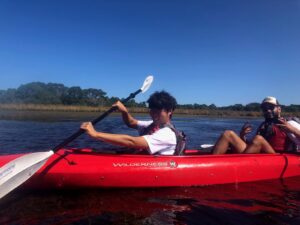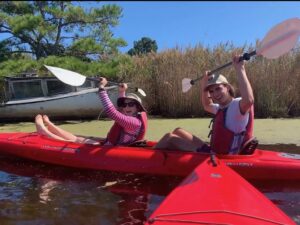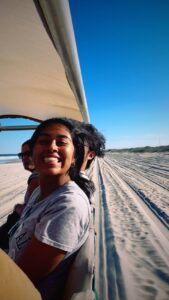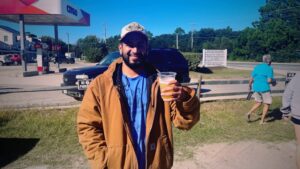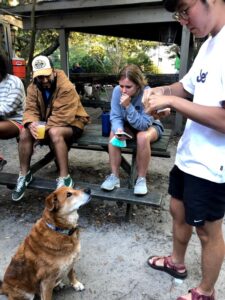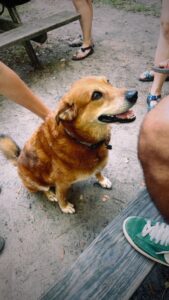After two busy weeks of orientation and a week and a half of COVID-altered plans, we’ve finally settled into a routine here in the Outer Banks. Our weeks are filled with individual internship work, capstone fieldwork, and field trips around the islands. Let me run you through what a typical week at the Outer Banks Field Site looks like:
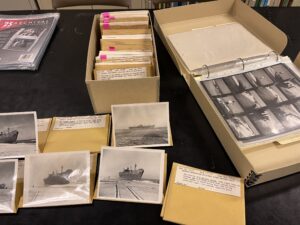
Monday morning, 6am: Something I love about my internship with the National Park Service is how unexpected it is. Even though my days are very structured and timely in terms of when they start and end, I never know what I will be up to on any given day. Last week, I assisted in a full necropsy of a Risso’s dolphin that had washed up on shore. This week, I got to identify and organize archival shipwreck photos dating back to the 19th century. I spent the rainy day sitting in a bare cinderblock building at the back of Fort Raleigh, which I expected to be similar to the junk drawer in my kitchen – full of random but necessary items that don’t fit in anywhere else. Instead, I found myself flipping through frightening and beautiful pictures of life saving crews in action as ships succumbed to the dangers of the Graveyard of the Atlantic. I spent my lunch break gawking at the titles of old books lining the room (some examples: “Annual Reports of the Life Saving Service from the year 1880” and “Wanchese Harbor Project Seminar from 1977”). Never underestimate the potential of an unmarked building!
Tuesday (and Thursday), all day: These are our class days, which we spend at CSI learning about environmental economics, coastal management and ecology. This week, we played Game of Floods, a game requiring us to work together to save the various structures and ecosystems of our unnamed island. It felt especially fitting given the past few weeks dealing with the effects of Hurricane Ian. These are also days to work on homework or other miscellaneous activities, like group dinners or beach trips.
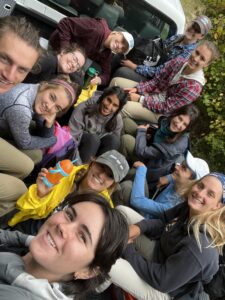
Wednesday, 7am: Over the past three weeks, the cohort has squished into CSI’s white van and made our way down to Buxton Woods for our capstone research. On this particular day, we quickly transitioned from our warm, sand-covered bus into the bumpy bed of a truck taking us deeper into the forest. We tried catching overhanging muscadine grapes in our mouths as we rushed down sandy trails, reminding me of the scenes in Sound of Music where the kids are happily skipping around Salzburg in matching dresses or hanging out of trees along the roadside. My excitement for the day was only slightly dampened by the rain and the task that lay ahead of us: finding the plots we hoped to sample. If there’s anything harder than following enigmatic instructions into the dense undergrowth of a unique maritime forest, it’s following such instructions written in 1988. Our main point of reference was a large dead Quercus tree, which was allegedly lying in the middle of our yet-to-be-identified plot – at least that’s where it was nearly 40 years ago. Our metal detector was having a field day; it beeped on everything other than our metal conduits, from beer cans to bullet casings. In the end, we estimated the position of the plot, and got to work on measuring and recording trees and vegetation.
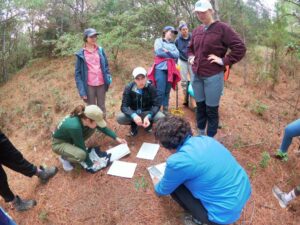
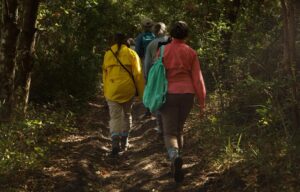
The act of searching for these stakes reminded me of an activity I have enjoyed for many years now – geocaching. Geocaching is a sort of global scavenger hunt, involving deciphering riddles and mapping coordinates that lead you to physical treasures hidden all over the world. I experienced similar feelings searching for the conduits in the woods as I do geocaching – the seconds of elation after hearing a sound from the metal detector, the subsequent disappointment of realizing we were two hours in and it was just another fishing pole buried in the ground, the subtle oddity of searching for a small object in a large stretch of land. Both activities force me to consider the various uses of space and of belonging to those spaces – two concepts that are very relevant to the social aspect of our capstone research. Geocaching garners some suspicious glances, as it requires randomly glancing under park benches or in between bricks on a wall to find the caches in places you wouldn’t otherwise visit. I’ve been lucky enough to have never been questioned when skeptically looking around an area, but I always wonder what people think I’m doing. Similarly, I wondered what the Buxton horse back rider, seemingly a local, thought of our large group sitting in the woods as she went about her weekly ride (entirely an assumption that it would be weekly). I’ve found it useful to reflect on what it means to be researching this space that many people call home; from the act of trampling the vegetation we’re meant to be surveying to the limitation of only visiting the woods a handful of times.
Friday, 7am: Early mornings seem to be a theme for the OBXFS. We conducted a ghost crab lab this Friday, which is how I found myself holding a measuring tape while hula hooping on the beach at sunrise. Once we finished reliving our childhood summertime hula memories, we tossed the hoops down an outlined transect and counted the number and size of ghost crab holes present. Even though they are a pain in the butt for my National Park coworkers and our safekeeping of turtle nests, ghost crabs play a vital role in beach ecosystems as an indicator species. We also used a clam gun (it is really called that) to analyze the organisms on the beach face – so many sand fleas!

By 9am, we were done for the day. We said goodbye to the ghost crabs (until next time) and a few students hopped in the car, making our way to Pittsboro for the Shakori Hills Grassroots Festival. Living on an island can feel isolating at times (another relevant Buxton Woods capstone topic), and being back to a familiar area on the mainland felt refreshing. On our drive back over the bridges connecting to Roanoke Island, however, I realized that I didn’t need to go back to the Triangle to be in a familiar place after all. I can’t wait for more crabs, tree diameter measurements, and unmarked historical buildings. All in a week’s work, I suppose!



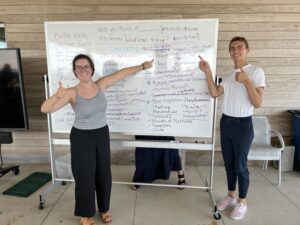

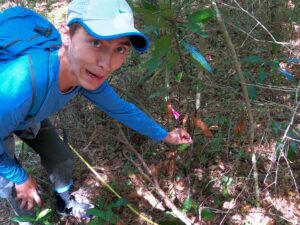
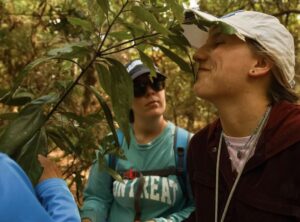
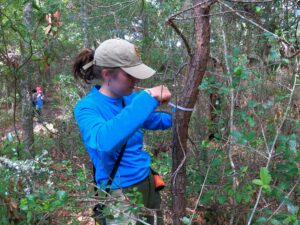
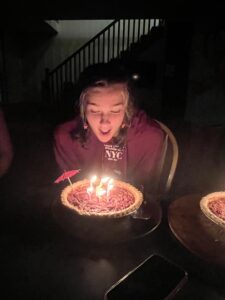
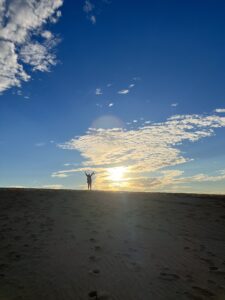
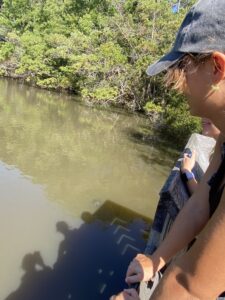
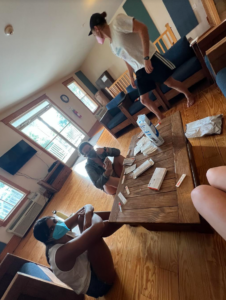
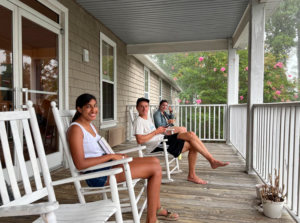
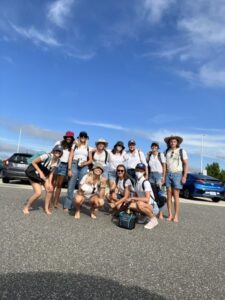
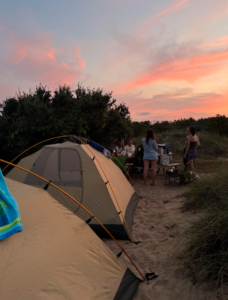
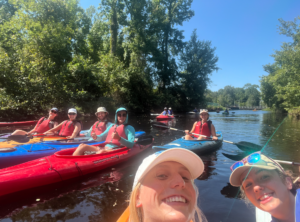
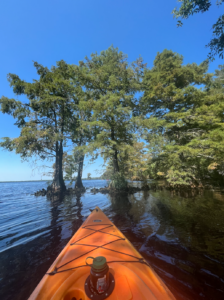
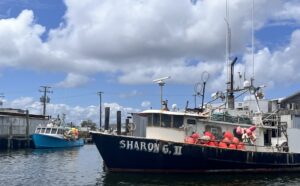
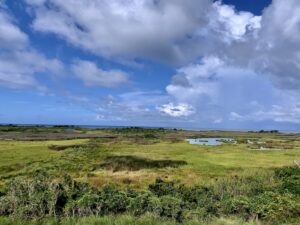
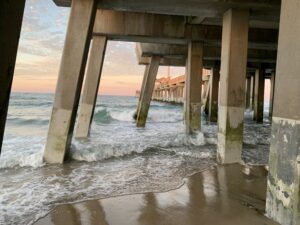
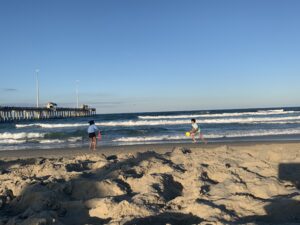
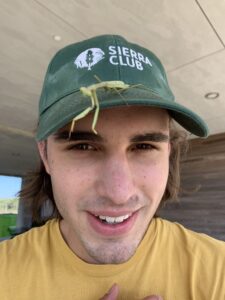
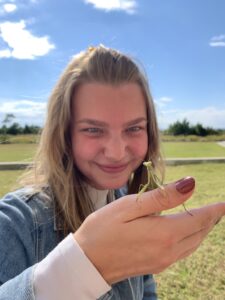
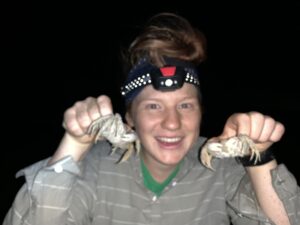
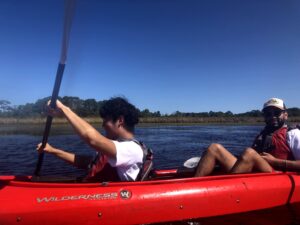
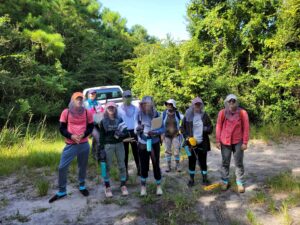
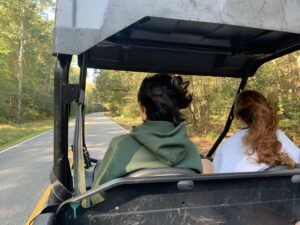
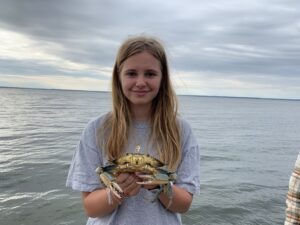
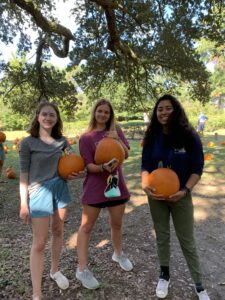
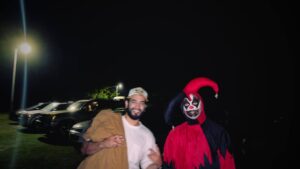
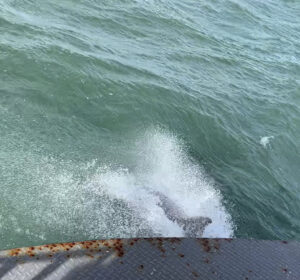
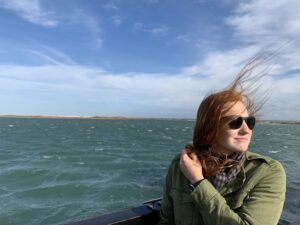
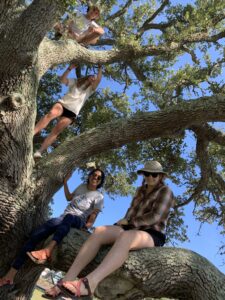
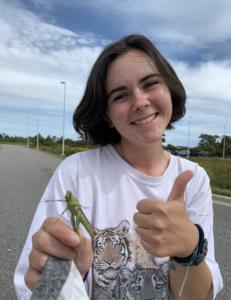
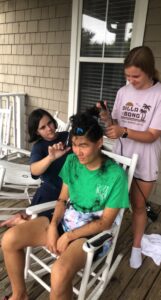
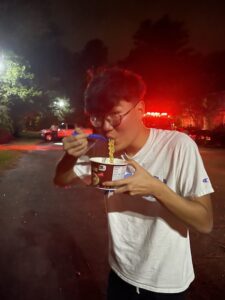
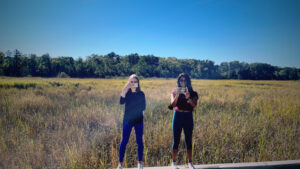

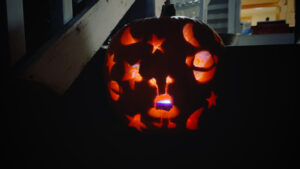
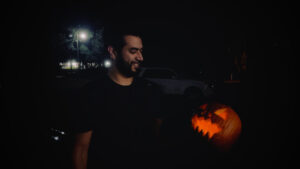
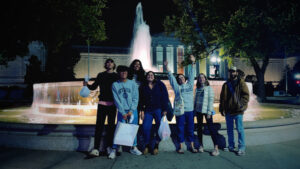
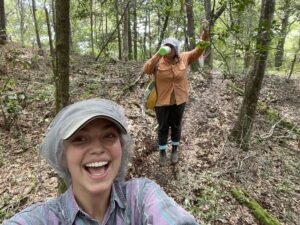
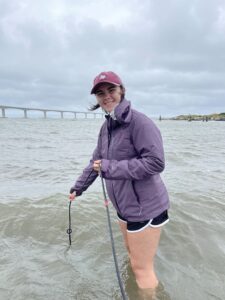
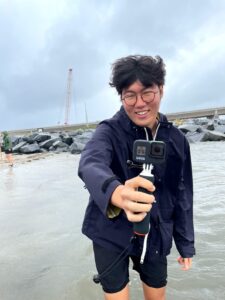
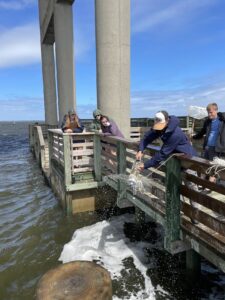

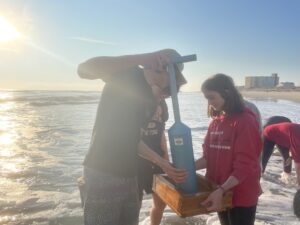

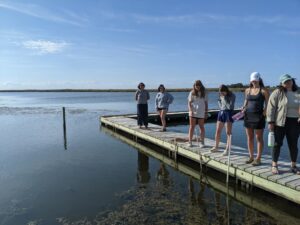
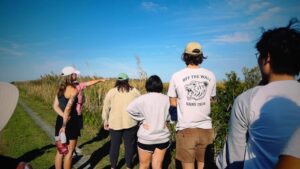
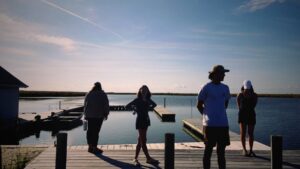
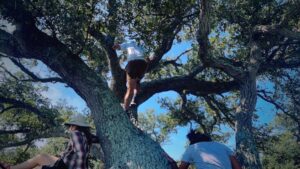
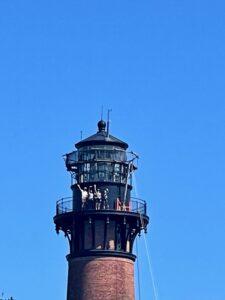
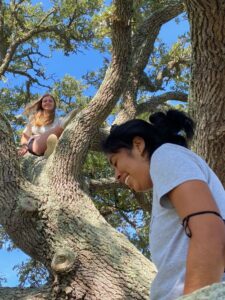 where we could see miles in every direction of the
where we could see miles in every direction of the 